Did you know that most of the fruits and vegetables in your home garden rely on bees, insects, and other pollinators to be able to produce their delicious crops?
Learn which plants need insect pollination and how to get beneficial bugs to visit your garden.
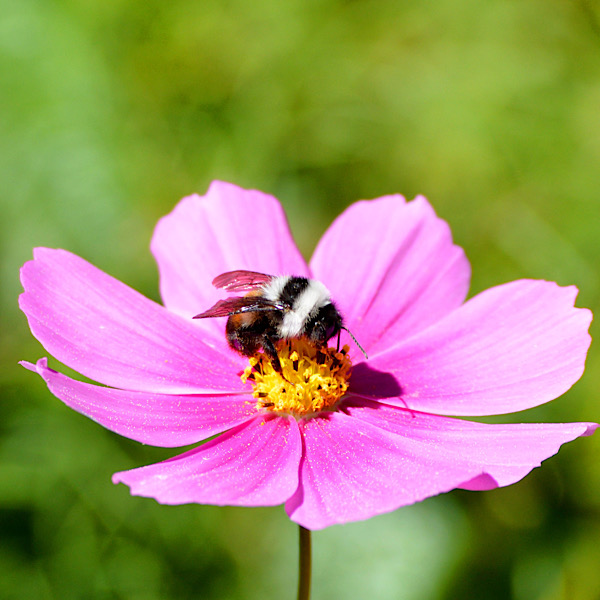
Jump to: |Why Pollination is Needed | Which Crops Need Bees or Insects? | Flowers That Attract Pollinators | Design Tips for the Garden | How To Hand-Pollinate
This post may contain affiliate links. As an Amazon Associate, I also earn from qualifying purchases. You can read our disclosure information here–
How Pollination Works
We’ve all heard of pollination, and most of us are aware that many of our favorite fruit or vegetable plants can’t make their delicious produce without it. But do you know how it actually works?
Generally speaking, the flowers of garden plants have male and female parts. The male part is called an anther or stamen, and it contains pollen. The female part is called the pistil, and it can receive pollen.
Once pollen has successfully been transferred onto the pistil, the flower can be considered pollinated (fertilized, basically) and it will produce seeds.
For your veggie garden, you’ll mostly want to attract bees and bumblebees, as they are the most efficient pollinators for the majority of our favorite food plants. Butterflies and moths can also help, as can some (hover) flies.
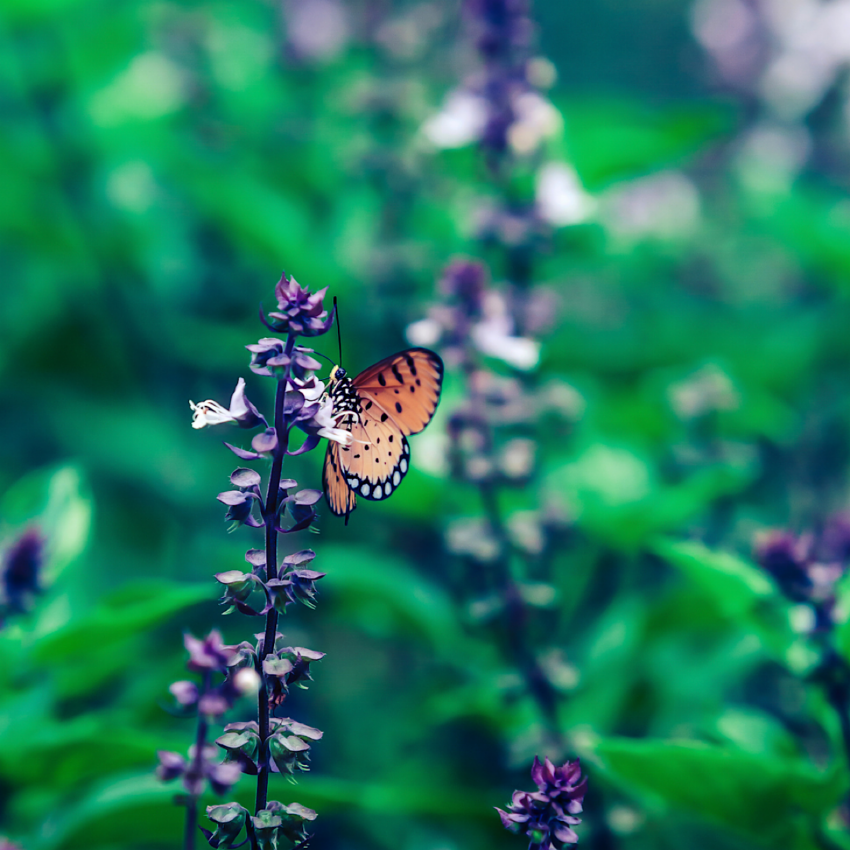
Which Fruit and Vegetable Plants Need Insect/Bee Pollination?
Not all plants need insects for pollination, and you can sometimes get by with plants that are considered self-pollinators.
Some plants that produce large amounts of lightweight pollen, only need the wind for pollination. Members of the grass family, like wheat or maize, are notable examples.
Growing Tip: Even plants that are considered “self-pollinators” benefit when they are cross-pollinated with different varieties. As a blueberry farmer, I have tested this with many varieties of blueberry plants. The yield is much greater when different varieties of blueberry plants are near enough to each other to get cross-pollinated.
The bulk of our favorite fruits and veggies do require insect pollination. They’ve evolved specifically to attract bees and other bugs using colorful, scented flowers that contain tasty nectar.

Examples of popular vegetables that need pollinators (or greatly benefit from their presence) include:
- Plants of the gourd family Cucuribitaceae: squash, pumpkin, zucchini, cucumber, (water)melon, loofah, etc.
- Plants of the nightshade family Solanaceae: tomato, (chili) pepper, potato, eggplant, tomatillo, ground cherry, etc.
- Plants of the carrot family Apiaceae: carrot, fennel, parsnip, parsley, cilantro
- Plants of the legume family Fabaceae: beans, peas, soy, lentil, chickpea
- SOME brassicas of the family Brassicaceae: Brussels sprouts, kale, collard and mustard greens, turnip. Cabbage can benefit from it.
- Okra
- Artichoke
- Endive
- Rhubarb
As you can see, these species include most of the veggies you’d grow in your garden.
Fruits that need (or benefit) from pollinators include:
- Plants of the rose family Rosaceae: apple, cherry, peach, plum, apricot, almond, strawberry, raspberry, blackberry, gooseberry, currant
- Plants of the heather family Ericaceae: blueberry, cranberry, huckleberry
- Citrus plants: lemon, orange, grapefruit, lime, mandarin, pomelo, kumquat
- Fig (special case—pollinated by fig wasps)
- Grape
- Pomegranate
- Mango
- Kiwi
- Avocado
- Passion fruit
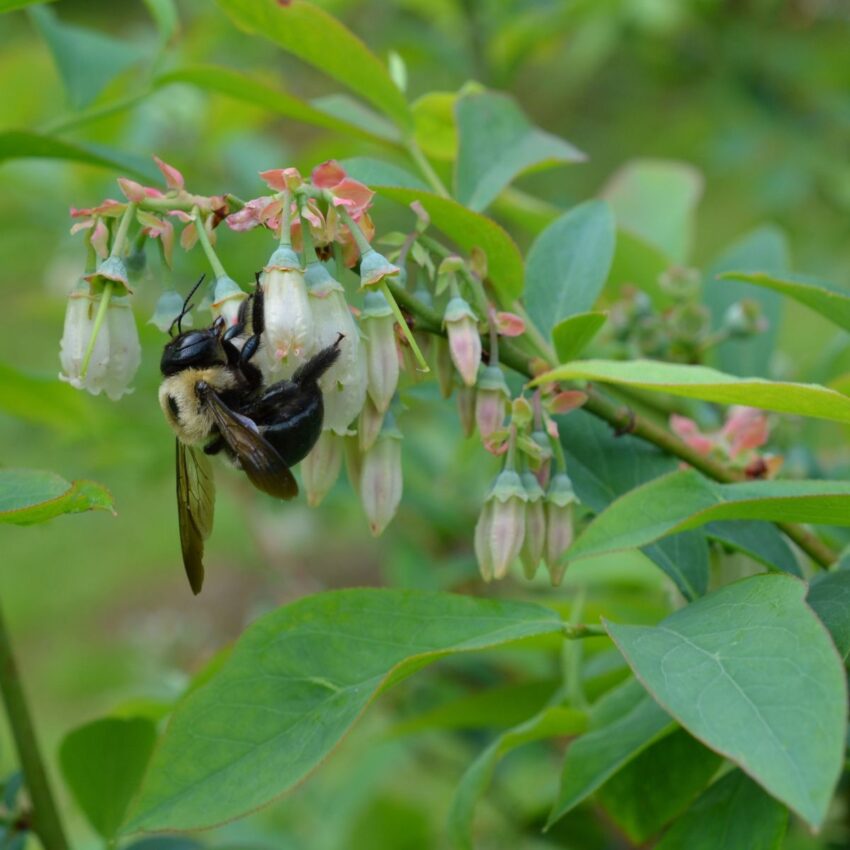
Which Garden Vegetables Do NOT Need Pollinators?
Certain garden fruit and vegetable plants rely mostly on wind pollination, or they are self-pollinators (called parthenocarpy). For some of these species, insects can help (i.e., promote higher yields). It’s just that they’re not an absolute must.
Examples include:
- Grasses: corn, wheat, rice, oats, barley, rye
- Plants of the onion genus Allium: onion, garlic, chives, leek
- SOME brassicas of the family Brassicaceae: broccoli, cauliflower
- Plants of the family Musaceae: banana, plantain (do not need pollination)
- Plants of the family Arecaceae: date palm, coconut
- Various nuts: hazelnut, walnut, pistachio
- Lettuce
- Pineapple (does not need pollination)

Tip: Look up whether the crop you’re planting is self-pollinating or cross-pollinated. The former means a plant can pollinate itself, meaning you only need one (common with nightshades). The latter indicates a plant needs the presence of another for pollination, meaning you need at least two (common in the gourd family and also preferable for many fruit trees).
How to Attract Bees and Pollinators to the Garden
Alright, so we’ve learned what pollination is and which of the plants in your vegetable garden need it. We’ve also learned that we’ll mostly want to attract bees and bumblebees for the best pollination. But how do we do this?
The answer is simple: feed them. By dotting your vegetable patch with all sorts of flowers, you don’t just make it look prettier, but you also supply a veritable feast for the bees.
The bees will come to the garden to gather the flower nectar needed to produce their honey.
For the best results, you should make sure there are always some tasty flowers mixed in with your fruit and vegetables. This way, pollinators will be present from early spring to late autumn.
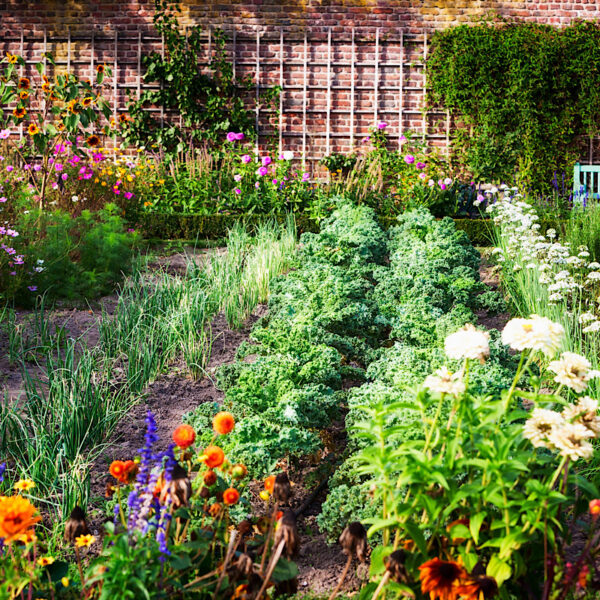
Best Flowers for Pollinating Spring Garden Produce
Fruit trees like apple and cherry flower in spring, which should hopefully attract loads of bees. Add to the bee banquet with:
- Crocus
- Bee balm
- Bluebell
- Lungwort
- Brunnera

Best Flowers for Pollinating Summer Garden Produce
- Lavender
- Sunflower
- Black-eyed Susan
- Coneflower
- Salvia

Best Flowers for Pollinating Autumn Garden Produce
Don’t forget to attract bees in autumn as well. Late bloomers like late berries, winter squash, and some brassicas will still need pollination. Make your autumn garden bee-friendly with:
- Aster
- Sedum
- Russian sage
- Goldenrod
- Helenium

Design Tips for Attracting Pollinators
Some of the best tips that have been tested on our farm in Minnesota for attracting bees to the garden include:
- Avoid pesticides
- Provide a water source (shallow dishes with rocks in them)
- Leave open sunny spots
- Install a bee hotel for solitary bee species
- Strategically place nectar flowers in the garden (see tips on this below)

How Close Do Pollinating Flowers Need To Be?
Placement is important if you’re going to plant flowers to attract pollinators to your crops. You’ve probably guessed it: the closer the better.
A good design for getting the best pollination in your garden would include:
- Plant nectar flowers at the head of your vegetable garden. This way, hopefully, the bees will come to check them out and then continue on to your crops.
- To keep the bees around once they’re inside, place flowers in clusters close to your fruit and vegetable plants. Bees like their snacks to be grouped together.
- Also place nectar flowers around the borders, around fruit trees, and within vegetable rows.
Tip: you don’t need a full-sized veggie garden to successfully attract pollinators. Even if you’ve just got a lemon tree in a pot on a balcony, using some nectar flowers as ground cover can signal to bees that there’s food to be had.
How to Pollinate Indoor Fruits & Vegetables
Do you grow an indoor garden? Nice! With the right set-up, this can work very well. The only thing you have to keep in mind is that our homes don’t exactly tend to be swarming with bees, so you’ll have to take it upon yourself to pollinate those flowers.
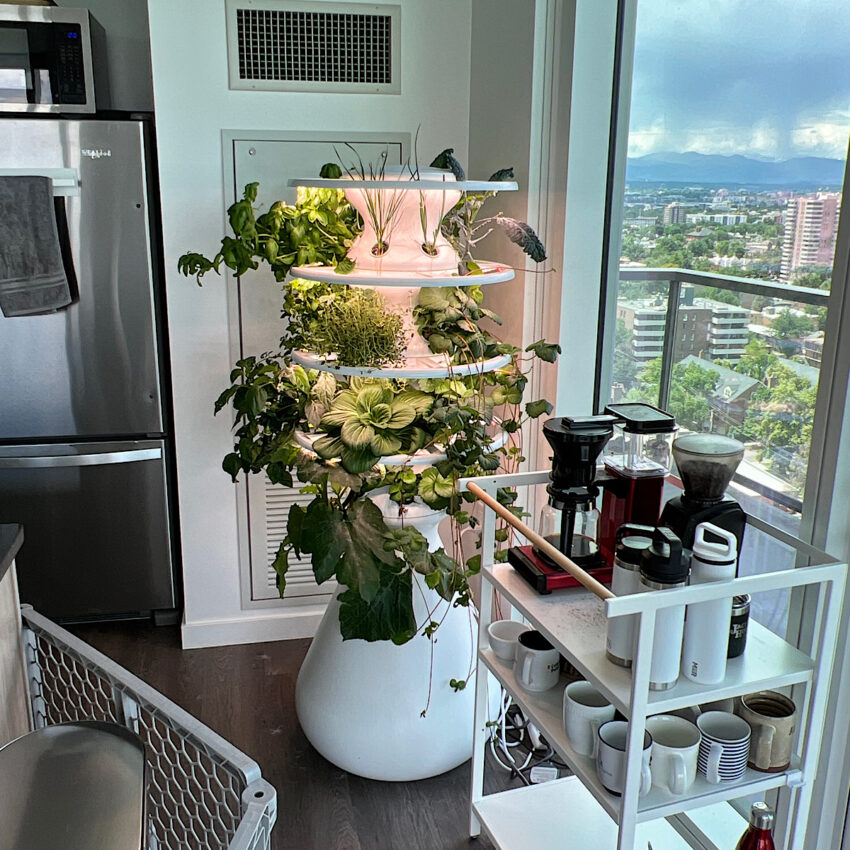
Hand-pollination for your indoor plants is actually quite easy. These 3 simple steps will guide your indoor pollination efforts:
- Gather your tools: you just need a fine brush, like a make-up or watercolor brush.
- Learn to recognize the plant’s anther and the plant’s pistil. The anther is the male part of the flower with the powdery pollen) and the pistil is the female part of the flower located in the center of the flower and protected by other flower parts. A great illustrated view of the flower parts can help simplify these locations.
- Gently pick up the pollen from the anther with the brush and apply it to the female part, the pistil, and voilà. Pollination!
Did you know? A brush is the most straightforward, but not the only method. Some folks use an electric toothbrush (be gentle!) or a Q-tip. Shaking or a small fan can also work. There are even commercial vibrating pollination devices that make the process entirely hands-off!
**Want more like this? Subscribe to our Sunday newsletter to get recipes, gardening guides, and diet help. Let’s go from Inspiration to Done!


Leave a comment